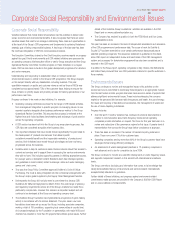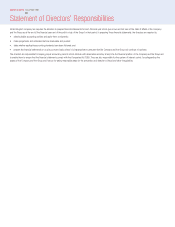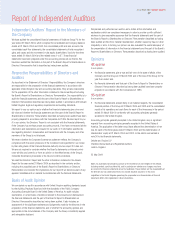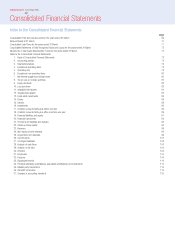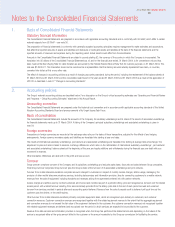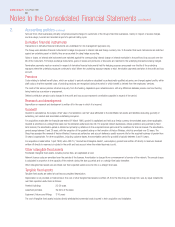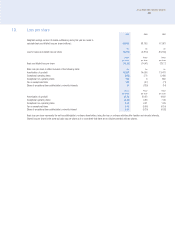Vodafone 2004 Annual Report Download - page 77
Download and view the complete annual report
Please find page 77 of the 2004 Vodafone annual report below. You can navigate through the pages in the report by either clicking on the pages listed below, or by using the keyword search tool below to find specific information within the annual report.
Annual Report 2004 Vodafone Group Plc
75
Investments
The Consolidated Financial Statements include investments in associated undertakings using the equity method of accounting. An associated undertaking is an
entity in which the Group has a participating interest and, in the opinion of the directors, can exercise significant influence over its operational and financial
policies. The profit and loss account includes the Group’s share of the operating profit or loss, exceptional items, interest income or expense and attributable
taxation of those entities. The balance sheet shows the Group’s share of the net assets or liabilities of those entities, together with loans advanced and attributed
goodwill.
The Consolidated Financial Statements include investments in joint ventures using the gross equity method of accounting. A joint venture is an entity in which
the Group has a long-term interest and exercises joint control. Under the gross equity method, a form of the equity method of accounting, the Group’s share of
the aggregate gross assets and liabilities underlying the investment in the joint venture is included in the balance sheet and the Group’s share of the turnover of
the joint venture is disclosed in the profit and loss account.
Other investments, held as fixed assets, comprise equity shareholdings and other interests. They are stated at cost less provision for any impairment. Dividend
income is recognised upon receipt and interest when receivable.
Stocks
Stocks are valued at the lower of cost and estimated net realisable value.
Allowance for bad and doubtful debts
Allowances are maintained for bad and doubtful debts for estimated losses resulting from the inability of customers to make required payments. Estimates are
based on the ageing of the debt balances and historical experience.
Taxation
Current tax, including UK corporation tax and foreign tax, is provided at amounts expected to be paid (or recovered) using the tax rates and laws that have been
enacted or substantively enacted by the balance sheet date.
Deferred tax is provided in full on timing differences that exist at the balance sheet date and that result in an obligation to pay more tax, or a right to pay less tax
in the future. The deferred tax is measured at the rate expected to apply in the periods in which the timing differences are expected to reverse, based on the tax
rates and laws that are enacted or substantially enacted at the balance sheet date. Timing differences arise from the inclusion of items of income and
expenditure in taxation computations in periods different from those in which they are included in the financial statements. Deferred tax is not provided on timing
differences arising from the revaluation of fixed assets where there is no binding commitment to sell the asset. Deferred tax assets are recognised to the extent
that it is regarded as more likely than not that they will be recovered. Deferred tax assets and liabilities are not discounted.
Leases
Rental costs under operating leases are charged to the profit and loss account in equal annual amounts over the periods of the leases.
Assets acquired under finance leases, which transfer substantially all the rights and obligations of ownership, are accounted for as though purchased outright.
The fair value of the asset at the inception of the lease is included in tangible fixed assets and the capital element of the leasing commitment included in
creditors. Finance charges are calculated on an actuarial basis and are allocated over each lease to produce a constant rate of charge on the outstanding
balance.
Lease obligations which are satisfied by cash and other assets deposited with third parties are set-off against those assets in the Group’s balance sheet.


